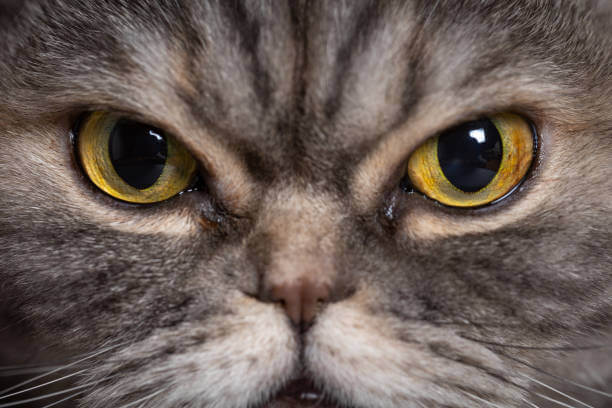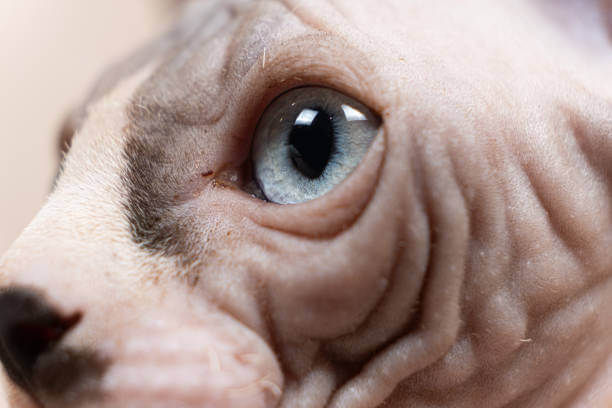Get the facts on feline anatomy and find out whether or not cats have eyelashes?. Learn more about your favorite furry friends with this comprehensive guide. Have you ever found yourself gazing into the mesmerizing eyes of a cat and wondered if they have eyelashes? Feline anatomy is truly captivating, filled with unique features that make our furry friends so intriguing. In this article, we will explore the world of cats’ eyes and uncover whether they possess those delicate fringe-like structures known as eyelashes. Join us on this enlightening journey into the enchanting realm of feline anatomy.

The Wonders of Cats Have Eyelashes?
Before delving into the question of whether cats have eyelashes, let’s first appreciate the wonders of their remarkable eyes. Cats possess some extraordinary features that contribute to their exceptional vision and hunting prowess.
Vertical Pupils
One of the most striking characteristics of cat eyes is their vertical pupils. Unlike humans and many other animals, which have round or horizontal pupils, cats’ pupils can constrict into narrow slits or dilate to large circles. This unique adaptation allows them to control the amount of light entering their eyes, providing enhanced depth perception and improving their ability to focus on fast-moving objects.
Tapetum Lucidum
Ever wondered why a cat’s eyes seem to glow in the dark? The secret lies in a structure called the tapetum lucidum. Located behind the retina, this reflective layer acts like a mirror that bounces light back through the retina, giving it a second chance to perceive images. This enhances cats’ night vision significantly and explains why they can navigate effortlessly in low-light conditions.
Now that we’ve marveled at some of the extraordinary features of cat eyes, let’s finally answer the burning question: do cats have eyelashes?
The Truth About Cat Eyelashes
While humans are known for their long and fluttery eyelashes, feline eyelashes are quite different. Cats do indeed have eyelashes, but they are not as visible or prominent as ours. Let’s explore the unique characteristics of cat eyelashes.
Short and Sparse
Cat eyelashes are generally short and sparse compared to human eyelashes. They are not designed for aesthetic purposes like ours; instead, they serve a more functional role in protecting their delicate eyes.
Protective Function
The primary function of cat eyelashes is to act as a protective barrier against potential hazards. They help keep debris, dust, and other foreign particles from entering the eyes, preventing irritation and potential damage. Whether it’s a gust of wind or a curious paw swipe, their lashes play an essential role in safeguarding their vision.
While cat eyelashes may not be as noticeable as ours, they serve an important purpose in maintaining the well-being of our feline companions.
Other Fascinating Features of Cat Eyes
Beyond the realm of eyelashes, cats possess several other intriguing eye-related features that contribute to their extraordinary visual abilities. Let’s explore some of these captivating aspects:

Third Eyelid: The Nictitating Membrane
In addition to their normal upper and lower eyelids, cats have a third eyelid called the nictitating membrane or “haw.” This translucent membrane rests at the inner corner of each eye and can move horizontally across the eyeball when necessary. Its primary function is to provide extra protection to the delicate cornea while still allowing some degree of vision.
Enhanced Peripheral Vision
Cats have impressively wide peripheral vision compared to humans. Their eyes are positioned on the front side of their head but set slightly apart. This positioning allows them to have a field of view spanning approximately 200 degrees, while humans typically have around 180 degrees. This expanded peripheral vision aids in detecting movement from various angles, making them excellent hunters.
Can Cats Recover From Eyelash Disorders?
Unfortunately, cats can develop genetically inherited eyelash disorders such as distichiasis and ectopic cilia. These conditions occur when eyelashes grow abnormally on the wrong part of the eye or in excess, leading to recurring irritation and inflammation.
Fortunately, there are treatments available to help your cat recover from these debilitating ailments. If you suspect that your cat may have inherited eyelash disorder, make sure to take them to the veterinarian for a diagnosis and discuss the best possible treatment option.
These are just some of the many fascinating features of cats’ eyes, and there is still much more to explore. From their protective eyelashes to their unique vision adaptations, cats are truly captivating creatures. We hope this article has helped shine a light on the wonders of feline anatomy!
Final Thoughts
Cats are amazing creatures, and their eyes offer a glimpse into the wonders of nature. From their vertical pupils to their protective eyelashes, every distinctive aspect of cats’ eyes serves a purpose in keeping them safe. Understanding these remarkable features can help us appreciate our beloved furry friends even more!
Understanding how cats’ eyes work is important so you can help them maintain healthy vision and protect their eyes from potential hazards. Our feline companions rely on us to care for them, so make sure to check in with your pet often and take proper precautions when necessary. Together, we can ensure that cats’ eyes stay healthy and beautiful.
FAQS
Q: Are cats’ eyelashes longer than human eyelashes?
A: No, cats’ eyelashes are generally shorter and fewer compared to humans. While our lashes serve a mostly aesthetic purpose, cat eyelashes protect their eyes from potential hazards such as dust and debris.
Q: Can cats have inherited eye disorders?
A: Yes, cats can suffer from inherited eyelash disorders such as distichiasis and ectopic cilia. These conditions occur when the eyelashes grow abnormally on the wrong part of the eye or in excess, leading to recurring irritation and inflammation.
Q: How can I help my cat recover from an eyelash disorder?
A: If you suspect that your cat may have inherited an eyelash disorder, make sure to take them to the veterinarian for a diagnosis and discuss the best possible treatment option. With proper care and attention, cats can often recover from these ailments.
Q: What other features do cats possess that contribute to their amazing vision?
A: Cats have a third eyelid called the nictitating membrane and enhanced peripheral vision compared to humans. Their eyes are positioned on the front side of their head but set slightly apart, allowing them to have a field of view spanning approximately 200 degrees.
Conclusion
The Blue Point Siamese cat breed offers an exquisite visual experience with their unique features and extraordinary eyes. From the protective eyelashes to the remarkable vision adaptations, we can learn a lot by studying cats’ eyes. With proper care and attention, you can help your pet maintain healthy vision and protect their eyes against potential hazards. We hope this article has inspired you to appreciate the mesmerizing beauty of the Blue Point Siamese cat breed and its captivating features!
We can also learn a lot from studying other animals’ eyes. Different species may have features that are unique to them, such as the remarkable night vision of many nocturnal animals. Furthermore, by understanding how our own eyes work, we can gain insight into how vision works across various species. As we continue to explore the many wonders of nature, may we strive to appreciate, protect, and cherish our furry friends!
